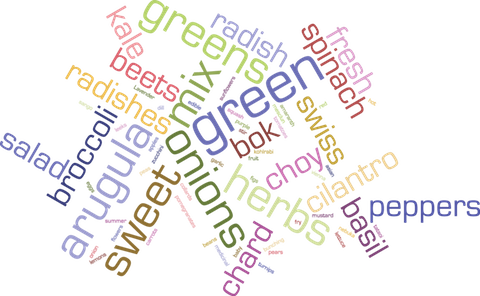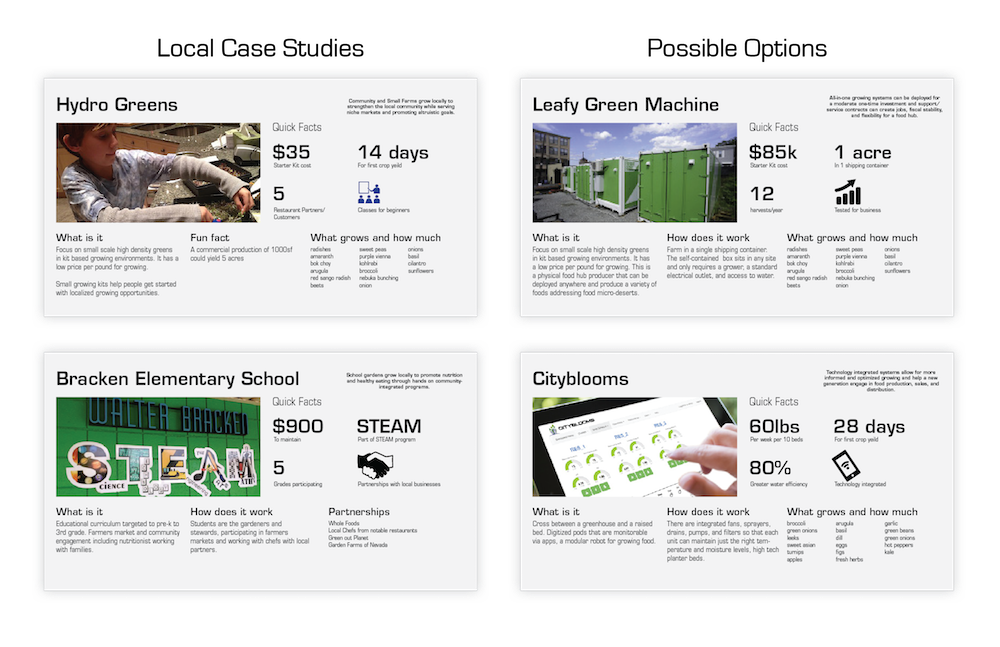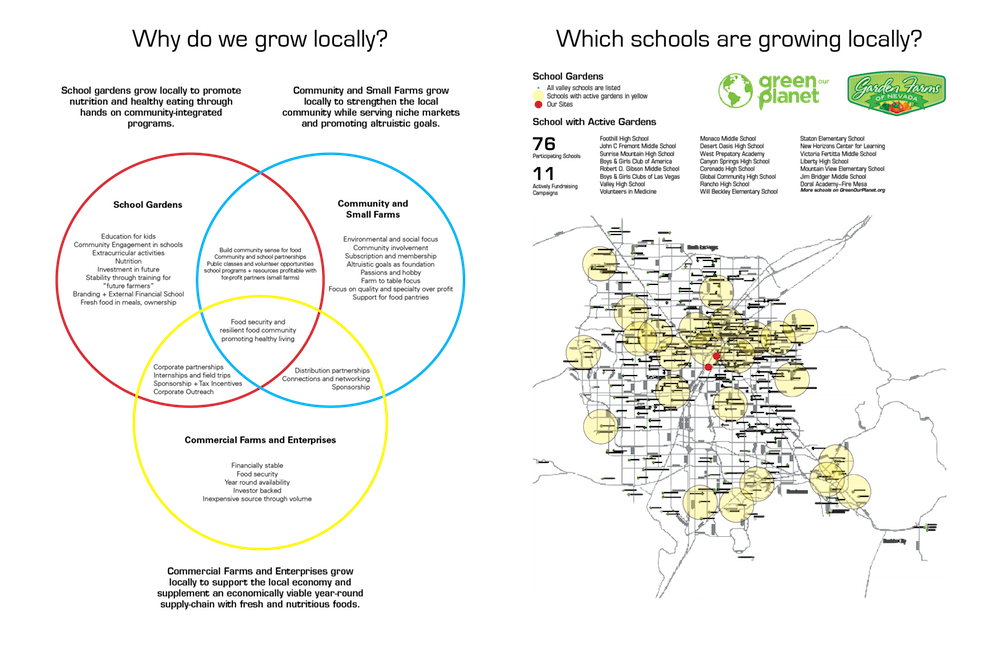Observation
Indoor and Local Growing
Who is growing at the local scale in Las Vegas, what does it look like, and how does the question of the indoors change the question?
This is part of a series of posts related to the Las Vegas Food Hub project.
The question for the day is why do we grow [indoor] locally? This was the field of study that Melissa and I approached this last week, addressing the current state of growing in the Las Vegas area. We studied the three growers in the city then expanded our search (removing the indoor filter) to schools.

Reasons for growing
We studied the local growers and wanted to understand the motivations and compelling reasons for why growers are in the valley. The study categorized growers into three categories: Commercial Farms and Enterprises, Community and Small Farms, and School Gardens. Each has its own unique qualities, for example commercial farms grow in volume to make inexpensive food while turning a profit. This provides regional and national food security year round and is relatively stable due to the involvement of investors and the complexity of the global food economy. Community gardens and small farms fall through the cracks in comparison to the large enterprises. We see that they are growing for reasons beyond profit. These can be altruistic causes such as promoting more sustainable or environmentally friendly alternatives to larger producers, focus on fresh and local food along with promoting the local economy, and community building. People enjoy interacting with the source of their food (that is the fruits and vegetable side of the food pyramid).

The school gardens category was the most interesting one for me, it offered a look at how the STEAM program is being used for something beyond creating tech job ready youth but on factors relevant to the well being of the city and its people. Las Vegas has 76 schools (at the time of writing) with school garden programs, many are affiliated and/or supported by Green our Planet (as a funding and support platform) and the more local Garden Farms of Nevada, the boots on the ground who help build and sustain these programs. The schools use funding and resource support to not only create garden programs for the students but grow with the goal of producing something they can enjoy themselves at the school, or sell. One school, the Bracken Elementary School, is doing this. They have a garden that is productive enough to hold markets where people from the community can purchase goods from the students. It has a relatively low price tag and is providing the students with an awareness of where food comes from and the importance of food security. It is made possible through a series of partnerships with local grocers and organizations but this is an idea that we wanted to foster. The research called for a handful of case studies to be evaluated. We looked at local options as well as some possibilities we found else where. The highlights were a company called Hydro Greens. They create growing kits which range from $35-50 and fit on your kitchen table (as a centerpiece) and can yield its first crop in less than a month, with subsequent harvests every 15 days! The options not yet in the city included an internet-connected growing pod called Cityblooms, and the Leafy Green Machine, a chipping container rigged with high tech hydroponic racks, systems, and an array of LEDs that change color based on the stage of growth of the food within. I think these self-contained units will become more common as time progresses, and they are a great way to finance a food hub's services which can be very volunteer and non-profit minded.

Photo Credit and Caption: David Madison/The Image Bank/Getty Images
Cite this page:
Wittmeyer, S. (2020, 17 June). Indoor and Local Growing. Retrieved from https://seanwittmeyer.com/article/grow-indoors
Indoor and Local Growing was updated June 17th, 2020.